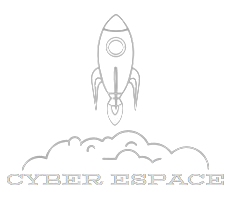
The Discovery shuttle will transport the
first American-made laboratory
for the
International Space Station, around which
future research activities will be articulated.
On February 7, 2001, the shuttle Atlantis took off for mission 5A / STS-98, a journey during which it would travel more than 8.5 million kilometers and circle the Earth 202 times. The objective of the mission was to continue the construction of the International Space Station by delivering to it the American-made laboratory module. Atlantis spent six days docked at the Station to allow the lab to be set up during three spacewalks.
The US Destiny Laboratory is considered the centerpiece of the International Space Station. This aluminum module – which measures 8.5 meters in length, weighs 14 tons and contains many frames to house scientific experiments – will indeed help fulfill the primary mission of the International Space Station which helps establish in the space the world’s largest research facility for the benefit of all mankind.
Destiny will give Canada and its 15 Space Station partners the opportunity to continue scientific and technological research under the unique conditions of microgravity. While Destiny is essentially America’s workstation aboard the Space Station, it will also be accessible to astronauts and cosmonauts of other nationalities doing research in a wide variety of disciplines.
His contribution to the ISS has earned Canada a valuable allocation of research time in the Station’s high-caliber laboratories. The Microgravity Sciences Program (MSP) was established to give researchers in private enterprise and universities the opportunity to gain experience in the design and assembly of experiments and equipment for use in science and technology. ‘space. PSM will allow researchers to conduct microgravity experiments and thus gain valuable information on the cardiovascular system, bones, brain and the effects of radiation on humans. These studies help find solutions to diseases such as cancer and osteoporosis, a dysfunction that affects more than one million Canadians.
The shuttle also carries Canadian robotics software for the International Space Station (ISS). This Canadian technology is essential to enable the manipulation of the next generation of the ISS robotic arm.
This is an important step in the series of missions planned for the next four months. These missions will culminate with the installation and operation of the Space Station Remote Manipulator (SSRMS). this advanced robotic technology that constitutes Canada’s contribution to the Space Station ,. Development of the robotics software was carried out by MD Robotics of Brampton, Ontario. This leading Canadian space company is the prime contractor for SSRMS.
A second Canadian element will be sent to the ISS during mission STS-98. A Canadian electronic device, called a Video Signal Converter (VSC), will be installed during a spacewalk by an American astronaut. This device will convert the video signal from the cameras to make it compatible with fiber optic communications systems inside the Destiny laboratory. The VSC was developed and built by CAE, contracted out to MD Robotics.
-
Recent Posts
- ASSEMBLY PHASES
- Basic central structure, Mobile transporter (MT)
- CANADARM 2
- Destiny module
- Exit airlock (End of the initial phase)
- Expedition 1
- Expedition III, Logistics
- Expedition IV, Logistics
- External structure
- Home
- Logistics
- Logistics II
- Logistics III
- MPLM Leonardo
- MPLM Mobile Base (MBS)
- MPLM Raffaello and Canadarm2
- NORTHERN LIGHTS
- Solar panels
- Unity module
- Zarya Control Module
- Zvezda module
Archives
Categories
Meta
